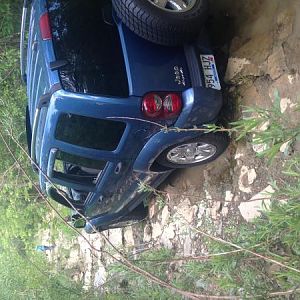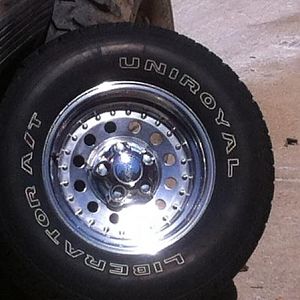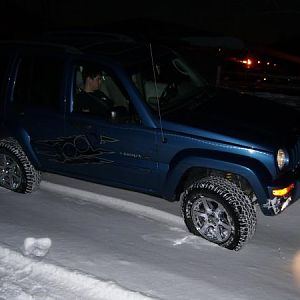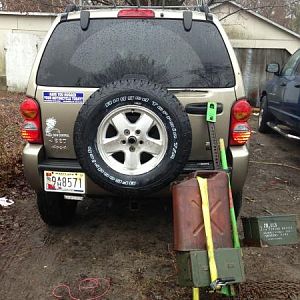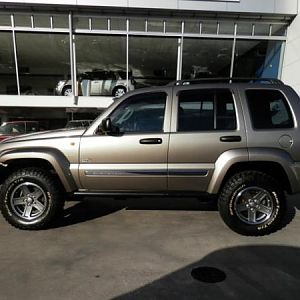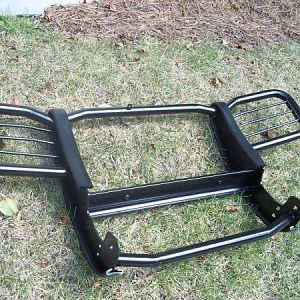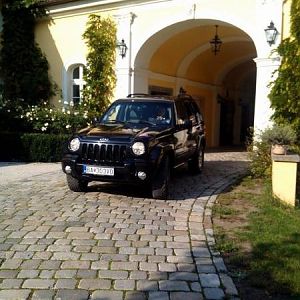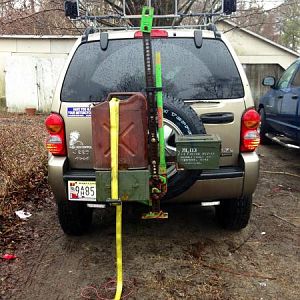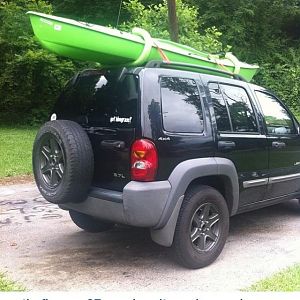DAGtunes
Full Access Member
Hello all,
Signed up here about a year or so ago when I had couple questions about my 2005 Jeep Liberty Renegade. Thanks for the answers back then. Since then, I've occasionally lurked but have not posted for a while. The time has come, as I have some more questions, and hopefully you good folks can give me some guidance/insight.
I recently needed 4 new tires, so I looked around on this forum to see what the biggest size was that I could get that wouldn't rub. 245/75/16's seemed to be the general concensus, and the Firestone Destination A/T seemed to be the favorite for similar drivers to myself. (primarily on pavement, with occasional off-pavement adventures...)
The Firestone Destination A/T's I got look great - though tight fit - and they do seem like a good tire. However, they do rub for me. Drivers side, and when driving forward, and turning the wheel full, like in a U-turn.
I got the biggest tires I could fit because I was also thinking of lifting it. I bottom out way too often when off-roading. This is my first 4WD vehicle, and I know next to nothing about modifying vehicles. My Liberty is stock.
After looking around in the lift section of this board, I kept seeing mention of people replacing thier lift kit every 30K miles or so, and other parts wearing out prematurely?
If you lift the vehicle, does this create a condition where the vehicle will require more mechanical attention than if you just leave it stock?
If so, what parts are the likely suspects to wear out, and what is the average cost of keeping the lift maintained?
How many miles should one expect a lift to last on average?
Any insight you could provide would be appreciated!
Signed up here about a year or so ago when I had couple questions about my 2005 Jeep Liberty Renegade. Thanks for the answers back then. Since then, I've occasionally lurked but have not posted for a while. The time has come, as I have some more questions, and hopefully you good folks can give me some guidance/insight.
I recently needed 4 new tires, so I looked around on this forum to see what the biggest size was that I could get that wouldn't rub. 245/75/16's seemed to be the general concensus, and the Firestone Destination A/T seemed to be the favorite for similar drivers to myself. (primarily on pavement, with occasional off-pavement adventures...)
The Firestone Destination A/T's I got look great - though tight fit - and they do seem like a good tire. However, they do rub for me. Drivers side, and when driving forward, and turning the wheel full, like in a U-turn.
I got the biggest tires I could fit because I was also thinking of lifting it. I bottom out way too often when off-roading. This is my first 4WD vehicle, and I know next to nothing about modifying vehicles. My Liberty is stock.
After looking around in the lift section of this board, I kept seeing mention of people replacing thier lift kit every 30K miles or so, and other parts wearing out prematurely?
If you lift the vehicle, does this create a condition where the vehicle will require more mechanical attention than if you just leave it stock?
If so, what parts are the likely suspects to wear out, and what is the average cost of keeping the lift maintained?
How many miles should one expect a lift to last on average?
Any insight you could provide would be appreciated!


